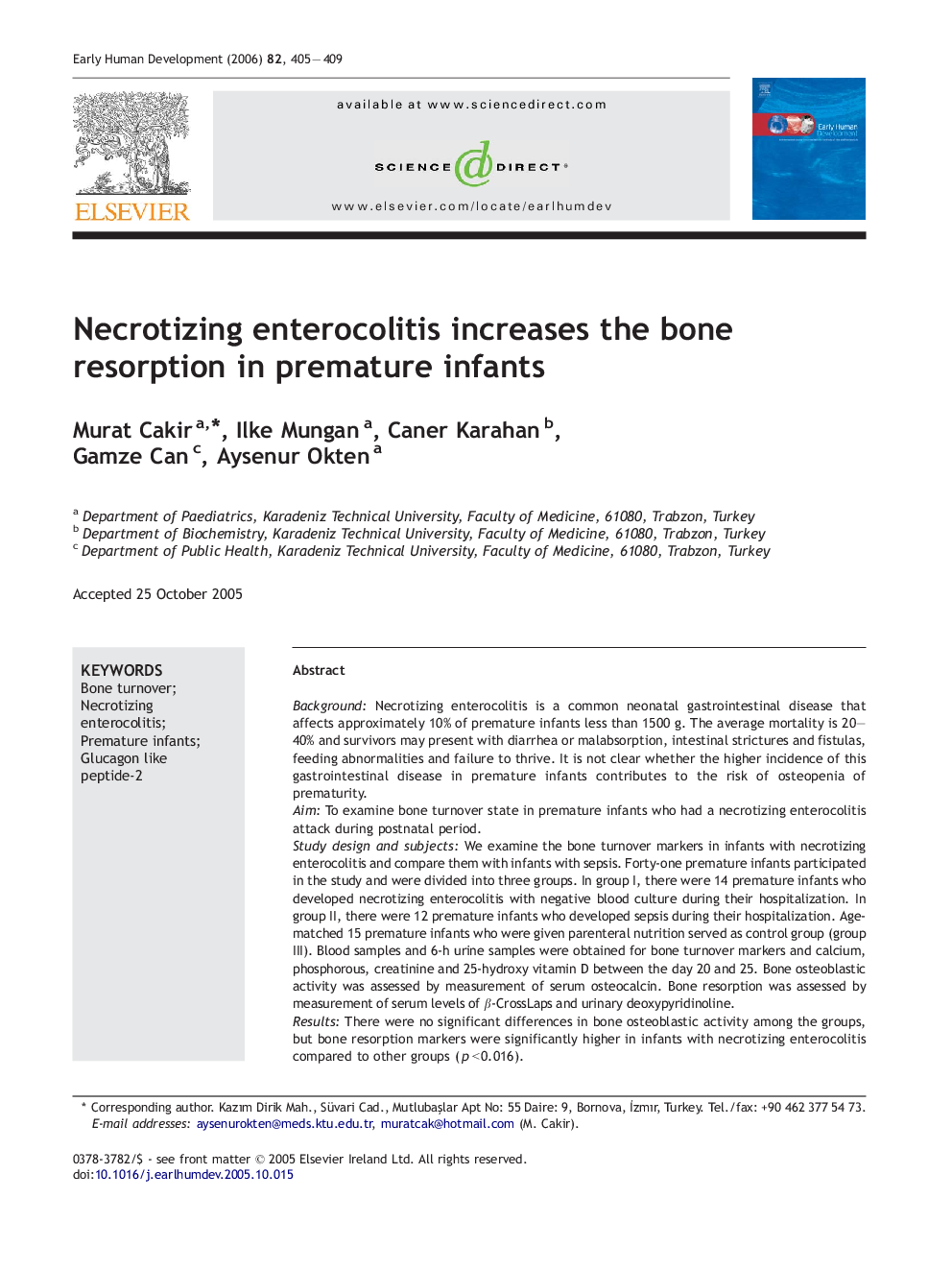| Article ID | Journal | Published Year | Pages | File Type |
|---|---|---|---|---|
| 3917386 | Early Human Development | 2006 | 5 Pages |
BackgroundNecrotizing enterocolitis is a common neonatal gastrointestinal disease that affects approximately 10% of premature infants less than 1500 g. The average mortality is 20–40% and survivors may present with diarrhea or malabsorption, intestinal strictures and fistulas, feeding abnormalities and failure to thrive. It is not clear whether the higher incidence of this gastrointestinal disease in premature infants contributes to the risk of osteopenia of prematurity.AimTo examine bone turnover state in premature infants who had a necrotizing enterocolitis attack during postnatal period.Study design and subjectsWe examine the bone turnover markers in infants with necrotizing enterocolitis and compare them with infants with sepsis. Forty-one premature infants participated in the study and were divided into three groups. In group I, there were 14 premature infants who developed necrotizing enterocolitis with negative blood culture during their hospitalization. In group II, there were 12 premature infants who developed sepsis during their hospitalization. Age-matched 15 premature infants who were given parenteral nutrition served as control group (group III). Blood samples and 6-h urine samples were obtained for bone turnover markers and calcium, phosphorous, creatinine and 25-hydroxy vitamin D between the day 20 and 25. Bone osteoblastic activity was assessed by measurement of serum osteocalcin. Bone resorption was assessed by measurement of serum levels of β-CrossLaps and urinary deoxypyridinoline.ResultsThere were no significant differences in bone osteoblastic activity among the groups, but bone resorption markers were significantly higher in infants with necrotizing enterocolitis compared to other groups (p < 0.016).ConclusionNecrotizing enterocolitis increases the bone resorption in premature infants. It may be related with reduced glucagon like peptide-2 levels, a new intestinal hormone that is primary secreted from distal small intestine.
